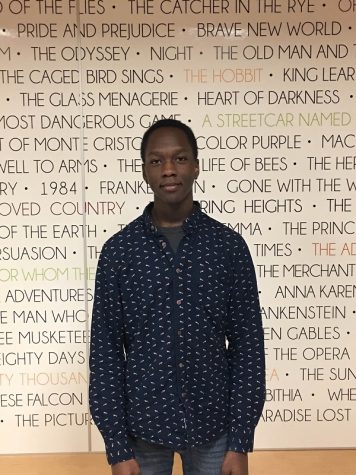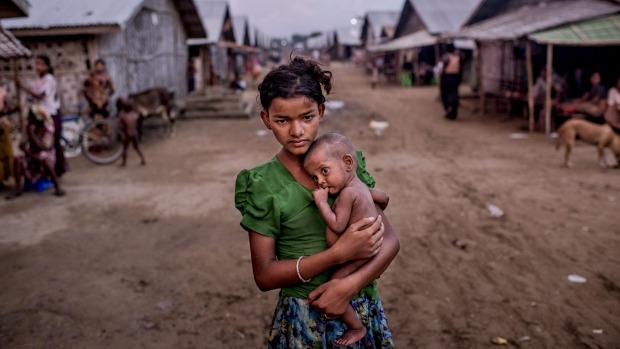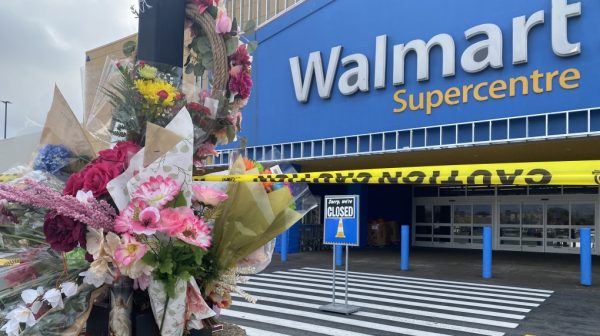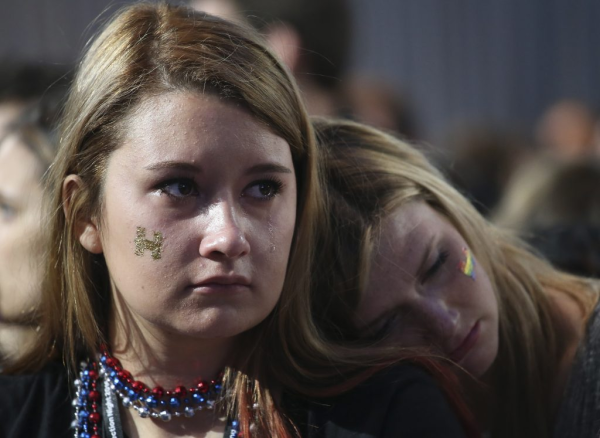The Rohingya of Burma flee to Bangladesh
The United Nations has estimated that approximately between 300,000 to 400,000 people of the Rohingya population in the Rakhine state of Burma have fled the nation for Bangladesh due to political oppression and ethno-religious violence within the past year.
Within the past year of 2017, there have been several reports of violence between a militant group referred to as the Arakan Rohingya Salvation Army (ARSA) and Burmese military officials.
The conflict was started by the ARSA whose coordinated attacks on Burmese military officials have led to the declaration of the group as a terrorist organization by the Burmese government. It has resulted in the death of over a hundred civilians and military personnel.
The Burmese government has developed a mistrust of the Rohingya people due to these cases and the Burmese military has targeted the Rohingya people for removal from their homes.
While ethno-religious discrimination and violence against the Rohingya predates the conflict within the past year, the third most recent example is the religious violence that commenced after Rohingya men were accused of the rape and death of a Buddhist woman. In 2012, nearly 300 people were killed and over ten thousand were displaced by the violence which ensued.
There are reports which have provided an account of widespread physical violence and arson from the United Nations and Human Rights Watch. These accounts detail the act of torture, rape, and death of Rohingya people by Burmese civilians and military officials.
The Rohingya people are most densely concentrated in the Rakhine State, which is located in the Southwestern region of Burma, where they constitute approximately one third of the nation’s total population with over one million people. The Rakhine State borders the nation of Bangladesh to the west and the Bay of Bengal (Indian Ocean) to the south.
The Rohingya people have migrated to other Southeastern Asian nations as well.There are believed to be two substantial Rohingya populations in Muslim-majority nations such as Saudi Arabia and Pakistan and the nation of India, as well.
While there is an estimated over hundred thousand of the Rohingya people which are registered under the legal status of refugee in the nation of Bangladesh, they constitute a significant amount of the refugee population in Malaysia where they constitute approximately 98% of all refugees in the nation, and are present in other neighboring nations such as Thailand, and Indonesia.
Many of the Rohingya have been victimized by the human trafficking system after migration to the nation of Thailand by boat from Myanmar or Bangladesh. The act of escaping by boat is a route which has been common for Rohingya in recent years. Since the beginning of 2015, thousands of Rohingya have left the nation of Myanmar through this particular route for other nations in the area.
The alternative is to reside in poverty in overcrowded and poorly-maintained government camps which are populated by over 140,000 people. Many of these camps are primarily funded by international organizations as opposed to the national government. Often, the Rohingya are required to register to live in these camps and are refused leave from them.
While the Malaysian and Thai governments have accepted some Rohingya refugees, they have claimed that it is not permanent. This decision is due to national and economic concerns.
The Rakhine state where the Rohingya reside is the most underdeveloped region in the nation of Myanmar with at a poverty rate of approximately 78%.
The Rohingya people have been stated to have historically existed in Southeastern Asia for centuries. The ancestry of the Rohingya within the geographic region which constitutes the nation of Myanmar dates to the fifteenth century. This is supported by a widely-accepted historical account of Muslim migration into the Arakan kingdom of Southeastern Asia.
There are many distinctions which have made the Rohingya people one the most vulnerable populations within the world. The Rohingya people are an ethnic and religious minority in Burma. This distinction along with the fact that the term “Rohingya” was has remained unacknowledged by the Burmese government has alienated them from the national population.
The Rohingya people do not speak Burmese, the lingua franca of Myanmar. They speak their own distinctive dialect “Rohingya” which shares linguistic similarities with the southern Bengali language of Chittagonian. The former has been adapted in the Arabic, Urdu, and Roman scripts from which it was influenced and has approximately 3 to 4 million speakers.
The Rohingya, which are primarily Muslim, have incorporated Sufism into their own practice of Sunni Islam. This has distinguished the group as a religious minority in a nation of which has a preference for Buddhism.
The Rohingya are not acknowledged by the Burmese government as one of the nation’s ethnic groups, but rather as a group of migrants from Bangladesh.
With the passage of a 1982 law, the Burmese government refused to grant the Rohingya people of access to full citizenship. As of now, the Rohingya population in Myanmar is what as referred to as a stateless or a group of undocumented immigrants which does not belong to any nation.
A lack of access to documentation has made it challenging for people within the Rohingya population to provide proof of their own ancestry to the Burmese government in order to gain citizenship.
This law has restricted their ability to move and marry. This law has also restricted their access employment, privacy, health services, and education. The Rohingya are prohibited from entering law and medicine as professions.
While the government has denied this mistreatment and abuse, the ethno-religious persecution and political oppression which the Rohingya people have endured has received international attention from human rights organizations and activists.

I am in 12th grade. I would like to study political science at the post-secondary level. I chose to study journalism because the critical thinking and...








